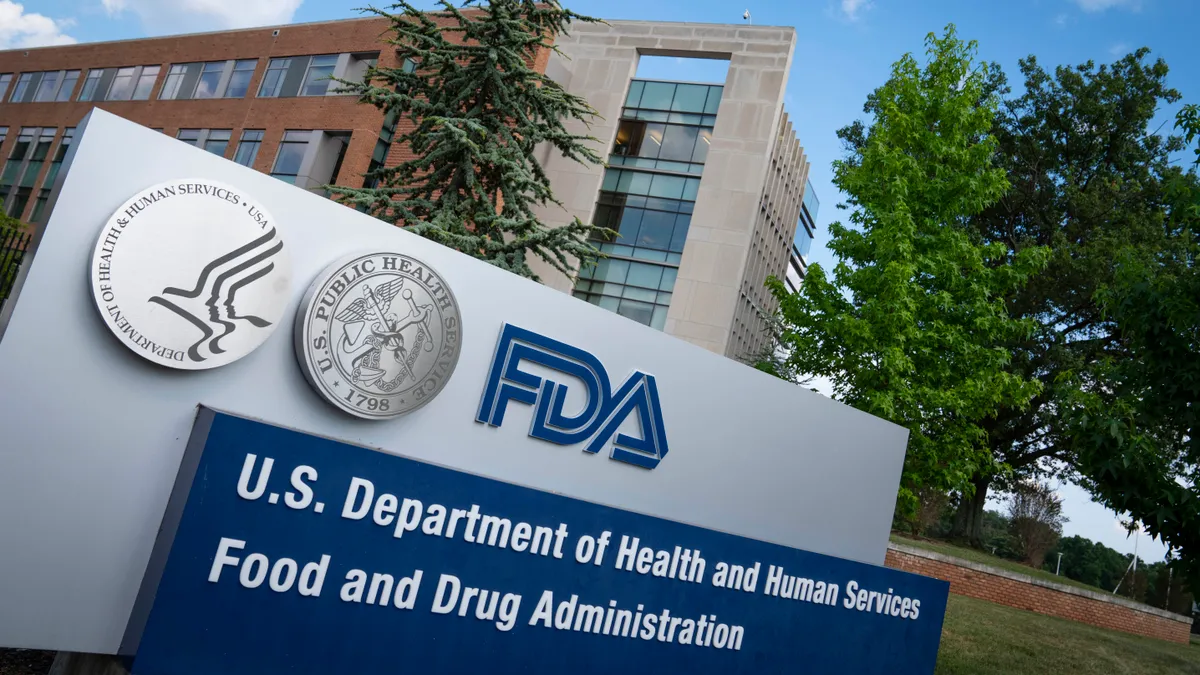Dive Brief:
- Premarket approval applications are on track to hit a record high in 2021, according to Wells Fargo analysts. The applications are adding to FDA's workload at a time when the agency is warning review times are slowing because of the volume of work.
- The Wells Fargo analysis shows average review times for PMAs and 510(k) submissions fell last year, albeit based on data that are still changing, but FDA has since said it has started to see an adverse impact on performance.
- Despite the pressures, FDA is on track to issue record numbers of safety communications and letters to healthcare providers in 2021, as well as to conduct more advisory committee meetings than in recent years.
Dive Insight:
FDA went into 2021 hoping for normalization of its workload after a year in which it had to cope with COVID-19 work while adapting to the restrictions imposed by the pandemic, all while continuing to carry out routine regulatory activities.
The Wells Fargo analysis suggests FDA kept on top of 510(k) filings and PMAs in 2020, with the current review times down on previous years.
"Although investors have been concerned that FDA review times would increase during COVID, that does not appear to be the case based on the data we analyzed," the analysts wrote in a note to investors.
The average review time for PMAs last year stands at 224 days, down from 299 days in 2019 and the lowest it has ever been in the Wells Fargo dataset. Similarly, the 119-day average for 510(k) reviews is the lowest in more than a decade. Some of the PMA and 510(k) reviews are ongoing, meaning the average times will rise, but the Wells Fargo analysts still framed the figures as the continuation of an ongoing improvement in the speed of FDA decisions.
Jeff Shuren, director of the Center for Devices and Radiological Health, said in May the FDA had "started to see adverse impact in some of our performance on 510(k)s [and PMAs]," suggesting that review times in 2021 may rise.
The Wells Fargo data show the impact is being felt in a year in which the industry is on track to submit 80 PMAs, up from the record-breaking 77 filed in 2020. At the current pace, 510(k) filings are on course to fall slightly compared to 2020 and 2019.
While PMA submissions are rising, the number of approvals is falling. The pace of approvals over the first half of the year points to FDA making 45 PMA authorizations this year. That is well down from the 61 PMA authorizations last year but in line with the number for 2019. Clearances for 510(k)s look set to fall slightly.
Diagnostics and cardiovascular are projected to lead all subsectors in novel devices approvals this year by a wide margin with 21 and 12 approvals, respectively, according to the report. For comparison, the ophthalmology subsector is projected to have five novel approvals and other subsectors like neuromodulation, orthopaedics and pulmonary are all projected to have two approvals.
While the total number of approvals is projected to be equal to previous years or lower in 2021, diagnostics and cardiovascular leading all other subsectors by a sizable margin is on track with the last three years.
The analysts contrasted the falling number of authorizations with the rise in postmarket activity. FDA had sent 11 safety communications by June 21, compared to 13 in all of last year. If FDA continues at the current rate, the analysts estimate it will send 25 communications this year. Since 2017, FDA has never sent more than 20 safety communications in a year.
Letters to healthcare providers are also on course to hit a new high.













